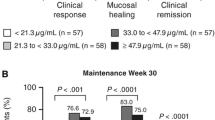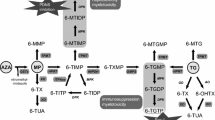Abstract
Background and Objectives
Inflammatory bowel disease (IBD) is a chronic inflammatory disorder of the gastrointestinal tract. DA-6034 has been shown to be effective in an IBD model and has demonstrated a good toxicological profile in preclinical studies. This study evaluated the tolerability, safety and pharmacokinetics of DA-6034 in healthy volunteers.
Methods
A double-blind, randomized, placebo-controlled, ascending-dose study was conducted in 67 healthy volunteers. In the single-ascending-dose study, 10, 20, 50, 100 or 200 mg of DA-6034 was administered orally to 40 subjects; in the multiple-ascending-dose study, 40, 100 or 200 mg/day of DA-6034 was administered orally to 27 subjects for 7 days. Serial blood and urine samples were taken for pharmacokinetic analysis. Plasma drug concentrations were determined by high-performance liquid chromatography. Safety and tolerability were assessed throughout the study.
Results
DA-6034 had minimal absorption, and the pharmacokinetic parameters were highly variable among subjects. For both the single- and multiple-dose administrations, the coefficients of variation of the area under the plasma concentration–time curve to the last observation (AUClast) and the area under the plasma concentration–time curve over the dosing interval at steady state (AUCss,τ) ranged from 16.0 to 125.0 %. At doses of up to 200 mg of DA-6034, the mean maximum plasma concentration (C max) was <3 ng/mL, and the urine recovery ratio was 0.3 % of the dose, indicating a lack of absorption. Twenty-two mild adverse events were reported in 14 subjects. There were no serious adverse events and no significant changes in the safety assessment.
Conclusion
DA-6034 was well tolerated and minimally absorbed in healthy volunteers. The non-systemic, local exposure of the gastrointestinal tract to DA-6034 may be advantageous for IBD treatment.


Similar content being viewed by others
References
Mowat C, Cole A, Windsor A, et al. Guidelines for the management of inflammatory bowel disease in adults. Gut. 2011;60(5):571–607.
Hawthorne AB, Hawkey CJ. Immunosuppressive drugs in inflammatory bowel disease: a review of their mechanisms of efficacy and place in therapy. Drugs. 1989;38(2):267–88.
Rosenberg LN, Peppercorn MA. Efficacy and safety of drugs for ulcerative colitis. Expert Opin Drug Saf. 2010;9(4):573–92.
Wu CM. The chemical constituents of Artemisia species (III): isolation and identification of the lipophilic constituents from Artemisia argyi. Zhong Yao Tong Bao. 1985;10(1):31–2.
Mota KS, Dias GE, Pinto ME, et al. Flavonoids with gastroprotective activity. Molecules. 2009;14(3):979–1012.
Kim YS, Son M, Ko JI, et al. Effect of DA-6034, a derivative of flavonoid, on experimental animal models of inflammatory bowel disease. Arch Pharm Res. 1999;22(4):354–60.
Nam SY, Kim JS, Kim JM, et al. DA-6034, a derivative of flavonoid, prevents and ameliorates dextran sulfate sodium-induced colitis and inhibits colon carcinogenesis. Exp Biol Med. 2008;233(2):180–91.
Ko SH, Yoo DY, Kim YJ, et al. A mechanism for the action of the compound DA-6034 on NF-kappaB pathway activation in Helicobacter pylori-infected gastric epithelial cells. Scand J Immunol. 2011;74(3):253–63.
Chung HJ, Choi YH, Choi HD, et al. Pharmacokinetics of DA-6034, an agent for inflammatory bowel disease, in rats and dogs: contribution of intestinal first-pass effect to low bioavailability in rats. Eur J Pharm Sci. 2006;27(4):363–74.
Yang SH, Bae SK, Kwon JW, Yoo M, Lee MG. Gender differences in the pharmacokinetics of DA-6034, a derivative of flavonoids, in rats. Biopharm Drug Dispos. 2006;27(1):47–51.
Nielsen OH, Verspaget HW, Elmgreen J. Inhibition of intestinal macrophage chemotaxis to leukotriene B4 by sulphasalazine, olsalazine, and 5-aminosalicylic acid. Aliment Pharmacol Ther. 1988;2(3):203–11.
Habal FM, Greenberg GR. Treatment of ulcerative colitis with oral 5-aminosalicylic acid including patients with adverse reactions to sulfasalazine. Am J Gastroenterol. 1988;83(1):15–9.
Fasci Spurio F, Aratari A, Margagnoni G, Clemente V, Moretti A, Papi C. Low bioavailability and traditional systemic steroids in IBD: can the former take over the latter? J Gastrointestin Liver Dis. 2013;22(1):65–71.
Ho GT, Chiam P, Drummond H, Loane J, Arnott ID, Satsangi J. The efficacy of corticosteroid therapy in inflammatory bowel disease: analysis of a 5-year UK inception cohort. Aliment Pharmacol Ther. 2006;24(2):319–30.
Acknowledgments
This research was conducted with the support of Dong-A Pharm. Inc. The authors do not have any conflicts of interest to declare.
Author information
Authors and Affiliations
Corresponding author
Rights and permissions
About this article
Cite this article
Lee, J., Shin, KH., Kim, JR. et al. Pharmacokinetics, Safety and Tolerability of DA-6034, an Anti-Inflammatory Agent, After Single and Multiple Oral Administrations in Healthy Volunteers. Clin Drug Investig 34, 37–42 (2014). https://doi.org/10.1007/s40261-013-0147-0
Published:
Issue Date:
DOI: https://doi.org/10.1007/s40261-013-0147-0




